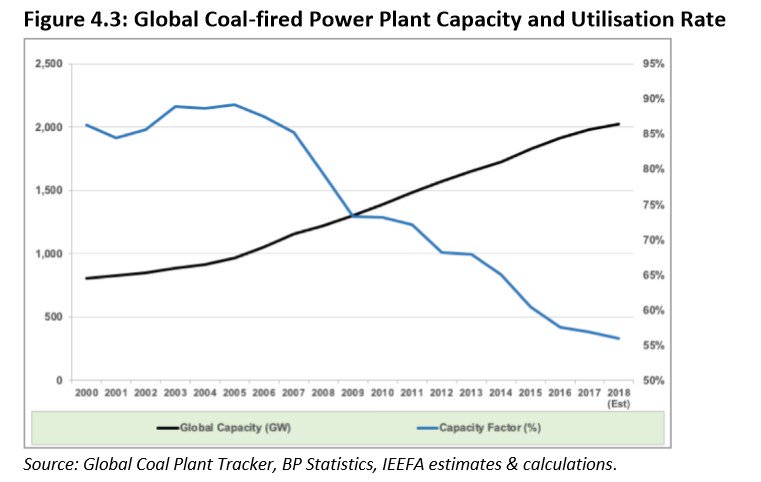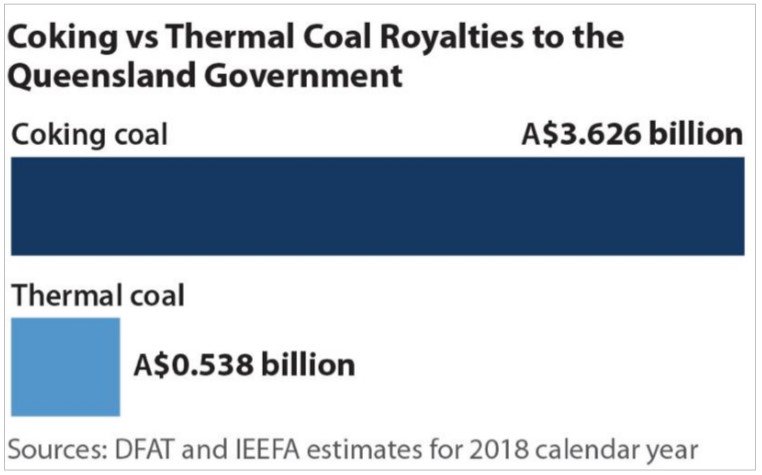Australia: Why the Coal Lobby has Misled Queensland on Value of Thermal Coal

June 3, 2019 - Australians must avoid falling for the tricks of the coal lobby, which is seeking to conflate the economic contributions of coking coal with thermal coal, a new research report has revealed.
With the looming approval of the Adani Carmichael coal mine, the coal lobby has been working overtime to spruik a range of claimed economic benefits from the development of a thermal coal mine.
But new analysis from the Institute for Energy Economics and Financial Analysis (IEEFA) shows that the coal industry is deliberately conflating the value of metallurgical coal (used for steel making), with that of thermal coal (used for power generation).
The IEEFA analysis shows that metallurgical (also known as coking coal) generates considerably larger royalties for governments, and accounts for 87% of all royalties received by the Queensland Government, and a substantially larger portion of Queensland export revenues.

“Coking coal contributes 71% of total Queensland export coal volumes, but a much more significant 82% of the value of coal exports.” the report says.
There has been a systemic decline in thermal coal demand since 2014, according to IEEFA, with global coal generation capacity expected to peak in 2020, following “a decade-long over-investment in new coal-fired power generation capacity”, the report says.
Thermal coal faces the dual threat of falling costs of renewable energy technologies and moves by Governments that are beginning to embrace a transition away from coal use for electricity production, in an effort to reduce greenhouse gas emissions.
Britain has recorded 15 straight days without coal power, as supply from lower emissions sources of power have begun to dominate the British electricity market.
The IEEFA found that while there has been continued construction of new coal-fired power stations across the globe, actual utilisation of these power stations has declined considerably, reaching a record low in 2018.
“An idle new coal plant does not use any coal; it simply represents a stranded asset” the report noted.
Report author and director of energy finance studies at IEEFA, Tim Buckley, says it is essential that Australia understands the different contributions thermal and coking coal make to the Australian economy, particularly when making policy decisions.
“It’s time to differentiate between structurally challenged thermal coal used for electricity and high value coking coal used in steel manufacturing,” Buckley said.
“Coking coal and thermal coal supply entirely different industries. They have very different volume trajectories going forward and have drastically different values.
“Today, exported coking coal provides a significant 87% of Queensland’s royalties from coal, with just 13% provided by thermal coal.”
“Coking coal is valued by the market at three times as much per tonne as Queensland’s thermal coal, and boosted by the progressive royalty rates already in place, coking coal pays four times the royalties of thermal coal per tonne.”

IEEFA picked out the Adani Carmichael mine as a thermal coal mine that will deliver marginal benefits to the Queensland economy.
“The Federal Resources Minister Matt Canavan, the Queensland Resources Council, and Adani are deliberately confusing people by combining coking and thermal coal, when they are completely different products offering completely different benefits to Queenslanders.” Buckley added.
“The people of Queensland need to know the truth when their government is being pressured to make a decision about approving Adani’s proposed high ash, low energy thermal coal mine for so little return to the State.”
Adani has received approval for one of its last environmental management plans, for the black-throated finch, in a review process researchers have labelled as “unscientific”.
An additional ground water management plan requires sign off from the Queensland Government, with construction of the controversial mine expected to commence shortly afterwards.
The mine is expected to supply thermal coal for electricity generation in power stations located in India, despite continued warnings about falling Indian demand for thermal coal.

